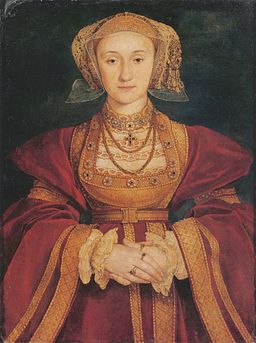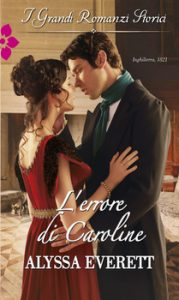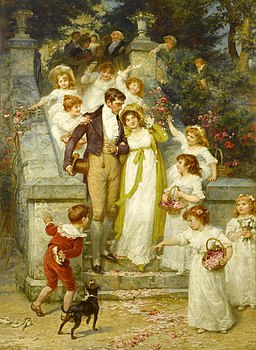How well should two people know each other before they marry? Better than these unhappy couples
by admin on Dec.04, 2020, under Uncategorized
When I was in college, one of my favorite instructors was a grad student who had met, proposed to, and eloped with the woman he married, all in the space of three weeks. They were blissfully happy together, and I hope that hasn’t changed, because the theme of his story was the sheer madness of having married on such short acquaintance.
Take the case of King Henry VIII’s marriage to his fourth wife, Anne of Cleves. Henry had never met the Lutheran princess, but his chief minister, the staunchly protestant Thomas Cromwell, urged the match. Henry agreed to marry Anne after viewing her portrait, but when the pair came face to face for the first time, Henry was less than impressed. He went through with the ceremony, but never consummated the marriage, saying after their wedding night, “I liked her not well before, but now I like her much worse.” Anne wisely chose not to contest an annulment, and Thomas Cromwell went on to lose both the king’s favor and his head.
Even when couples think they know each other, first impressions can be misleading. In 1777, Mary Bowes, the widowed Countess of Strathmore, met an army officer named Andrew Robinson Stoney. When insulting articles about the countess appeared in London’s Morning Post, Stoney leaped to her defense, not only responding in print, but even challenging the editor to a duel. Mary had no idea that Stoney had written the insults as well as the responses, and that the duel was only a ruse. Pretending to be mortally wounded, Stoney persuaded Mary to marry him. He took his vows from a stretcher, but the two were no sooner wed than Stoney recovered as if by magic. He made Mary’s life miserable—forcing her to sign over protected assets, abusing her, holding her prisoner. He consorted with prostitutes and even raped the servants. It took the help of loyal servants for Mary to escape. When she filed for divorce, Stoney abducted her. He was eventually arrested, but that didn’t stop him from publishing scandalous details of Mary’s past affairs. The resulting divorce proceedings blackened Mary’s name and dragged on until her death. Stoney was so unprincipled that, decades later, William Makepeace Thackeray used him as the model for the fortune-hunting cad in The Luck of Barry Lyndon.
The last regency I published, The Marriage Act, is about a marriage that gets off to a similarly disastrous start.
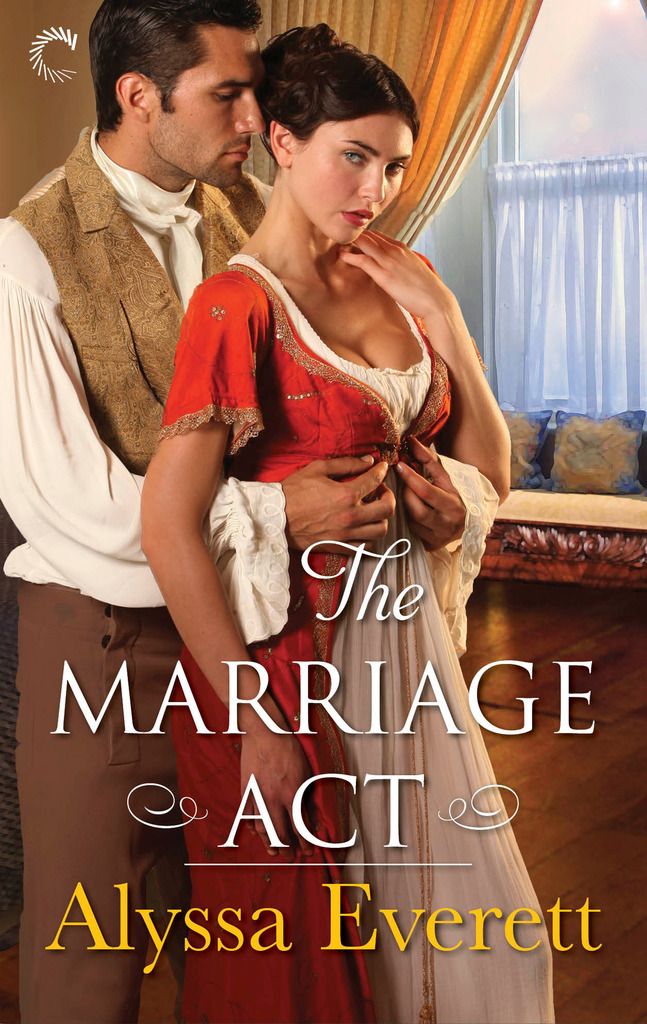
London, 1821
When John, Viscount Welford, proposed to Caroline Fleetwood, the only daughter of the Bishop of Essex, he thought he knew exactly what he was getting—a lovely, innocent bride.
Five years later, he knows better. The woman who ran to another man on their wedding night—after they’d consummated the marriage—is hardly innocent. Years spent apart while John served as a diplomatic attaché have allowed them to save face in society, but all good pretenses must come to an end. When Caroline receives word that her father is dying, she begs John to accompany her on one last journey to see him.
But there’s an added problem—Caroline never told her father that her marriage to John was a farce. As they play-act for others, Caroline is delighted to find she never really knew her husband at all. But can she be the kind of wife he needs—and does she want to be?
What’s your best (or worst) whirlwind courtship story? Do you know any couples who rushed into marriage? How did it turn out?
Another Italian translation
by admin on Feb.01, 2017, under Author news, Bookshelf
Romance Novels for Feminists
by admin on Jan.09, 2016, under Uncategorized
I was thrilled to discover (a few days after the fact) that The Marriage Act made Romance Novels for Feminists’ Best of 2015 list. You can read the entire list (which also features author Rose Lerner, one of my talented critique partners) by clicking here.
The Marriage Act makes Best of 2015
by admin on Jan.02, 2016, under Uncategorized
My thanks to Romantic Historical Reviews, and to reviewer Caz in particular, for including The Marriage Act on the site’s list of “Favourite Books of the Year.”
New Italian translation
by admin on Aug.18, 2015, under Author news, Bookshelf
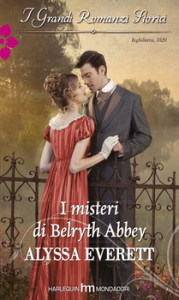 I got a lovely surprise in the mail today–a new translation of AN HEIR OF UNCERTAINTY. The Italian title is “I misteri di Belryth Abbey” (the pun must only work in English) and I absolutely love the cover!
I got a lovely surprise in the mail today–a new translation of AN HEIR OF UNCERTAINTY. The Italian title is “I misteri di Belryth Abbey” (the pun must only work in English) and I absolutely love the cover!
A Roman Road Through Britain
by admin on Aug.03, 2015, under Blog posts, Historical background
My newest regency romance, The Marriage Act, begins as a cross-country “road” story, with an unhappily married husband and wife forced to spend time in each other’s company as they travel through England. The road that the hero and heroine take out of London is a real thoroughfare, parts of which were already more than a thousand years old at the time of the Norman conquest. It’s called Watling Street, and it’s a Roman-engineered relic of the first century occupation of Britain.
Before the Romans arrived in Britain, the native Britons had already established paths that ran from the English Channel to a point where the Thames was narrow enough to ford, then later split into separate western and northern routes. When the Emperor Claudius sent his legions to conquer Britain in 43 AD, the Romans made use of these routes in their new province of Brittania. They built a lighthouse and later a fort at Portus Dubris (the port of Dover), then a paved road that ran northwest to cross the river Stour at the Roman town of Duruvernum Cantiacorum (present day Canterbury).
From there, the Roman road continued through present-day Rochester and on to Londinium (London). The Romans founded Londinium in 47 AD, building a bridge across the Thames and establishing a settlement on the north bank. That same winter, they paved the road that crossed the bridge.
What we now know as Watling Street ran in a westerly direction through Londinium and was nearly thirty feet wide in places. Leaving London, it turned to the northwest in a straight line corresponding to the present-day Edgware Road and continued through Verulamium (modern day St. Albans) and beyond. The Roman word for a paved road was strata, and many towns and villages along the route owe their names to the old road, including various forms of “Stratford” and “Stretton.” The name “Watling Street” comes from a tribe that lived in the region of St. Albans, the Wæcelinga.
Roman rule ended in Britain in the late fourth century, and subsequent centuries saw first Saxon and, later, Viking invasions. In 878, Alfred the Great defeated the Vikings, who withdrew into East Anglia, Essex and Eastern Mercia, rendering Watling Street the boundary between the Viking (Danelaw) and Saxon sections of Britain. The road went through various stages of disrepair and resurfacing over the centuries, but for the most part it remained well-traveled. Chaucer’s fictional pilgrims in The Canterbury Tales employ the London-to-Dover stretch of Watling Street in the late 1300s, and during the Great Fire of London in 1666, the diarist Samuel Pepys mentions how he “…walked along Watling Street as well as I could, every creature coming away loaden with goods to save – and here and there sick people carried away in beds.” Rebulding the church of St. Mary-Le-Bow after the fire, Sir Christopher Wren’s workmen discovered sections of the old Roman paving, and incorporated stones from the Roman road into the church foundation.
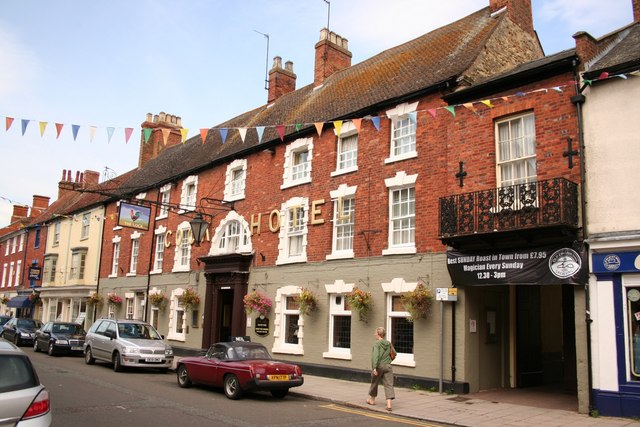
Watling Street rose to greater prominence in the coaching era, and the first turnpike trust in England was established in 1707 to re-pave parts of it. Inns along the route thrived. The southeastern section of the road, from London to the coast, became known as the Great Dover Road. To the west, civil engineer Thomas Telford improved communications between London and Dublin by extending the road all the way to the port of Holyhead in Wales, an undertaking completed in 1826. It’s this section of Watling Street–the Holyhead Road–that my characters travel in The Marriage Act.
Today, the Great Dover Road is known as the A2, and the Holyhead Road is roughly the A5, though the name “Watling Street” is still in use at many points. You can even find evidence of the Roman occupation, such as sections of the ancient city walls in St. Albans. Not only did Watling Street link the eastern edge of Great Britain, the coast of Kent, with the western edge in Wales, but we owe much of the London we know today to the old Roman road and the settlement that grew up around it.
I hope you’ll take a look at The Marriage Act, and that reading it gives you a feel for what traveling along Watling Street might have been like during the golden age of coaching in the early 1800s. If you enjoy “second chance at love” romances, you’ll find lots of drama in this story of a married couple bringing their relationship back from the brink of disaster.
Release day for THE MARRIAGE ACT
by admin on Jul.27, 2015, under Uncategorized

London, 1821
When John, Viscount Welford, proposed to Caroline Fleetwood, the only daughter of the Bishop of Essex, he thought he knew exactly what he was getting—a lovely, innocent bride.
Five years later, he knows better. The woman who ran to another man on their wedding night—after they’d consummated the marriage—is hardly innocent. Years spent apart while John served as a diplomatic attaché have allowed them to save face in society, but all good pretenses must come to an end. When Caroline receives word that her father is dying, she begs John to accompany her on one last journey to see him.
But there’s an added problem—Caroline never told her father that her marriage to John was a farce. As they play-act for others, Caroline is delighted to find she never really knew her husband at all. But can she be the kind of wife he needs—and does she want to be?
To order or learn more, just click here.
All About Romance reviews The Marriage Act
by admin on Jul.21, 2015, under Author news, Reviews
At All About Romance, reviewer Caz has posted her thoughts on The Marriage Act. She gives the book a grade of B+, writing, “I’m a sucker for a good second-chance romance, and this is one of the best I’ve read.”
Thanks, Caz!
Reader review of The Marriage Act
by admin on Jun.25, 2015, under Author news, Reviews
The Marriage Act will be out on July 27–and I just found out about a lovely review from an advance reader, available here:
Click here to read author Sarah Price’s review of The Marriage Act.
Thanks, Sarah, and I’m glad you enjoyed the book!
Publisher’s Weekly reviews The Marriage Act
by admin on May.05, 2015, under Author news, Reviews
I just received the first review for The Marriage Act. This is what Publisher’s Weekly has to say:
Everett (An Heir of Uncertainty) ignites sparks between wedded strangers in this tender Regency romance. Caroline, Lady Welford, has just been reunited with her husband, John, Lord Welford, after he served five years in diplomatic service. She believes that her father is dying, and John agrees to travel with her to her father’s home in Kegworth, where they will pretend to have a perfect marriage. But John still hasn’t forgiven Caro for trying to run off with a militia officer on their wedding night. Throughout their lengthy journey and subsequent stay in Kegworth, they begin to not only work through their misunderstandings but learn to forgive and trust. But Caro’s cousin Sophia’s flirtations with John threaten to destroy their newfound truce. Caro is an especially strong and determined heroine, whose ability to persevere despite her husband’s desertion of her makes her a very admirable character. Intense and ever-present romantic tension propel the novel to its emotional conclusion.
So, yay! Waiting for the first review(s) to come in for a book can be scary, and The Marriage Act is a bit edgier than my previous four romances, so I’ve been holding my breath.
I find it interesting that PW singled out the heroine as admirable. The book features a married couple who are at war with each other, and, so far, readers tend to come down strongly on either the hero’s side or the heroine’s–but it’s running 50/50 as to which of the two characters is more sympathetic.
